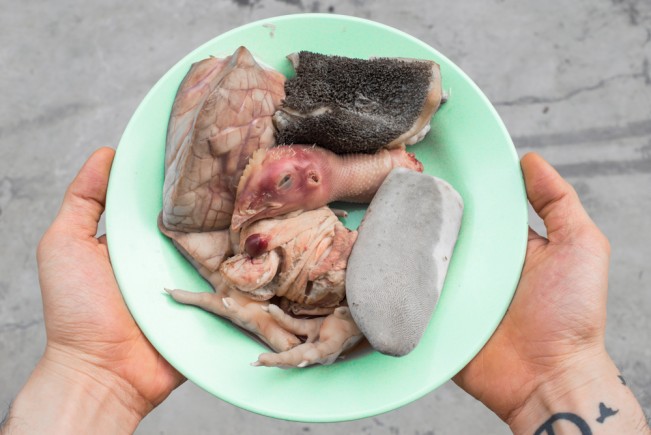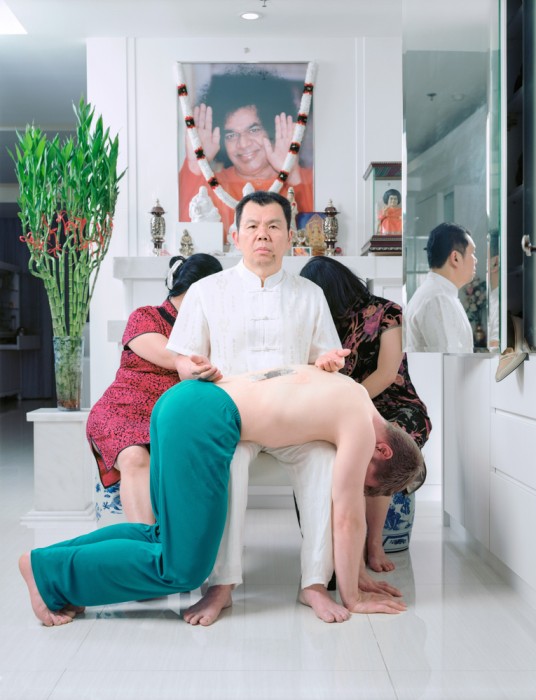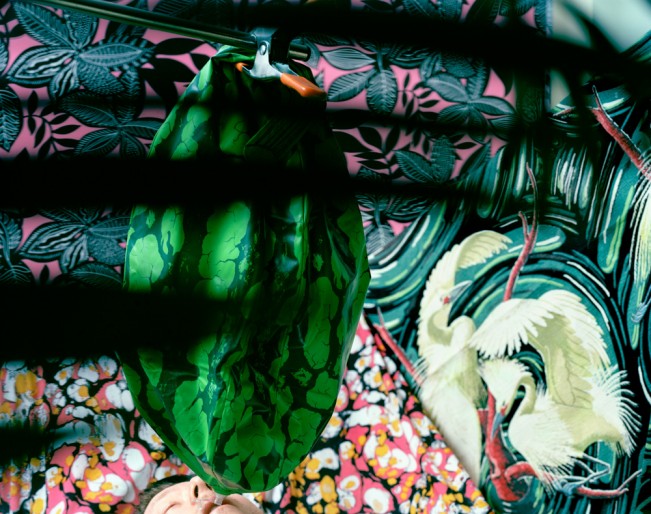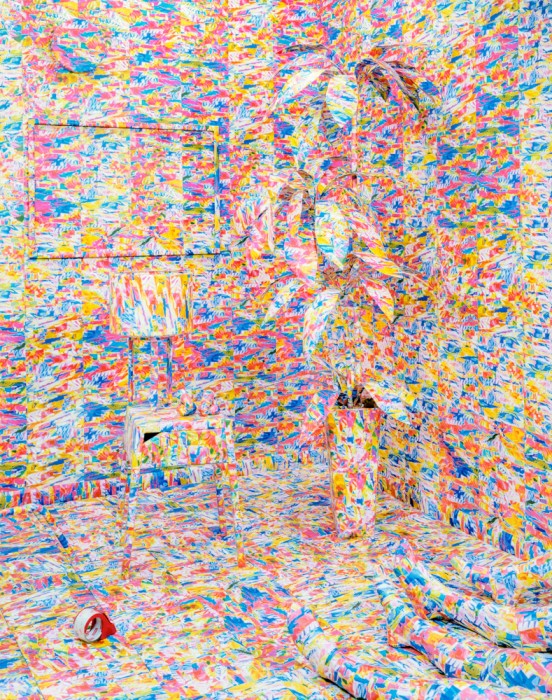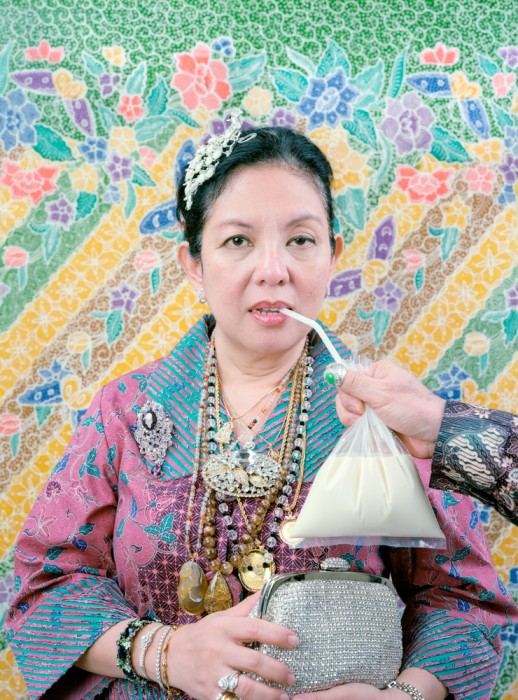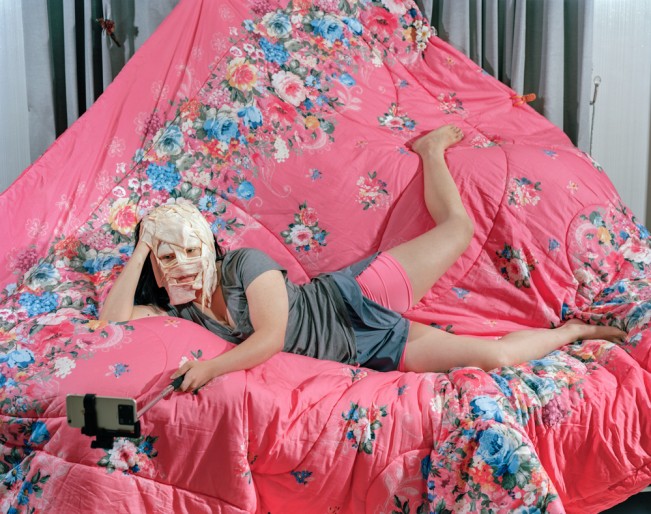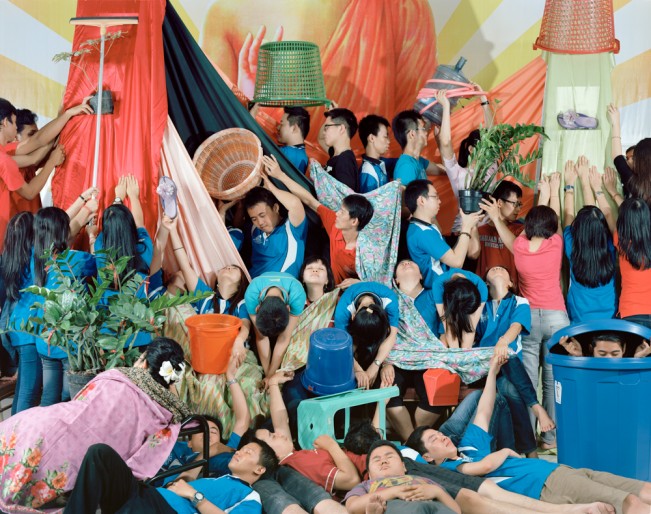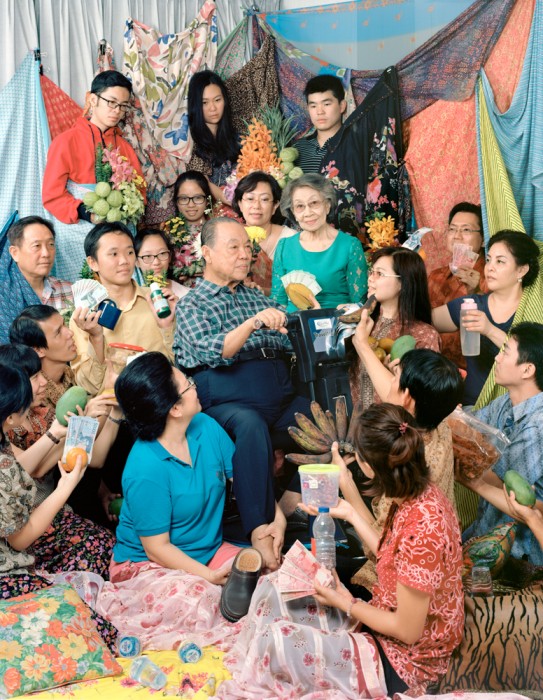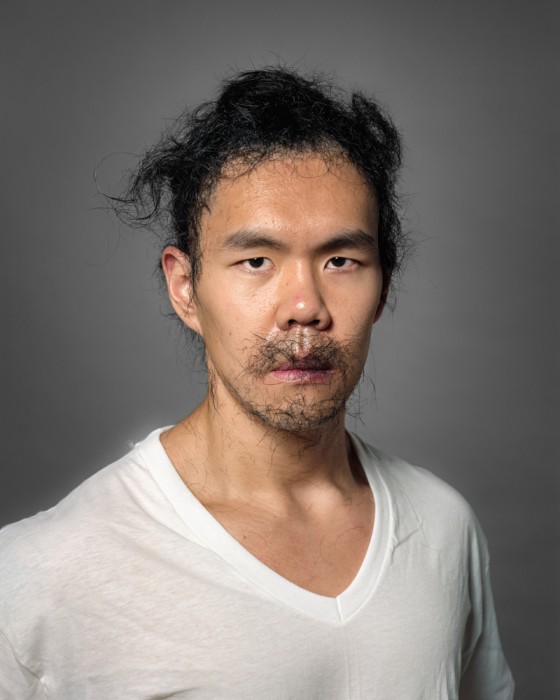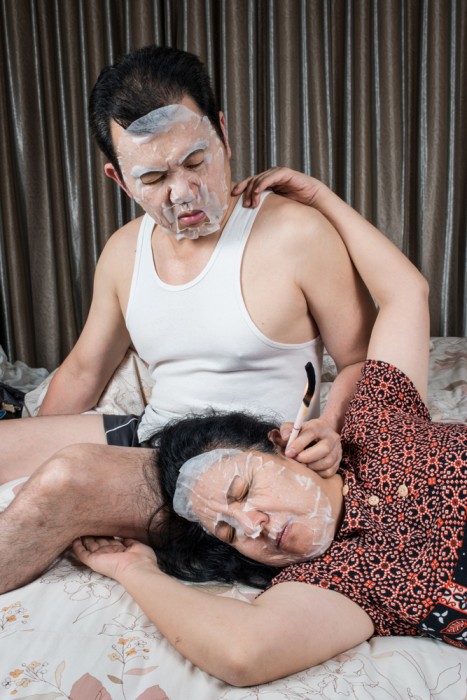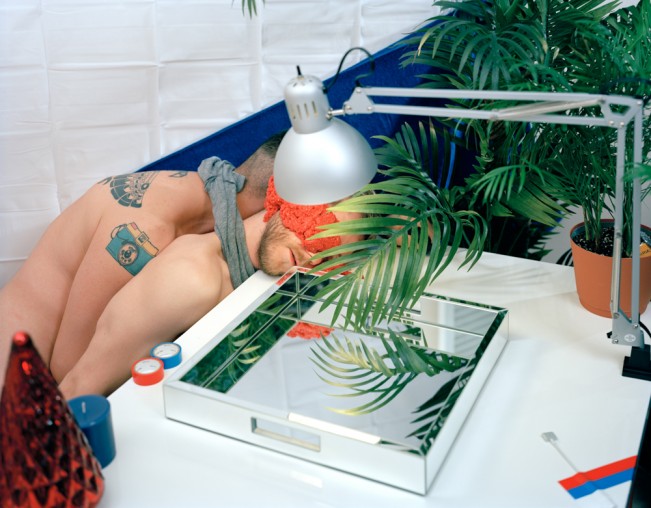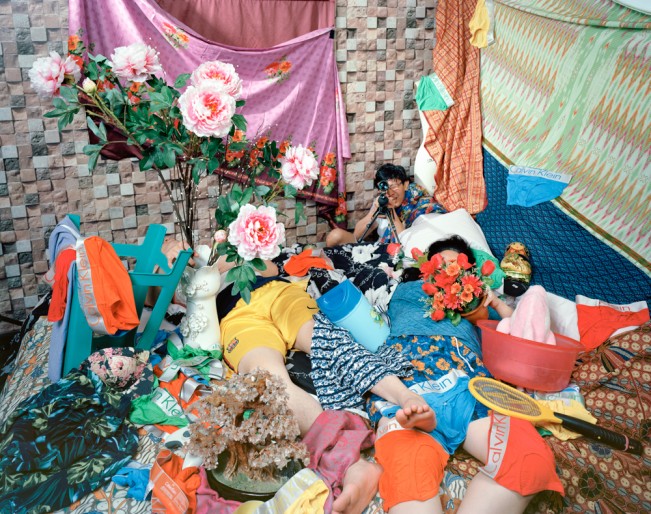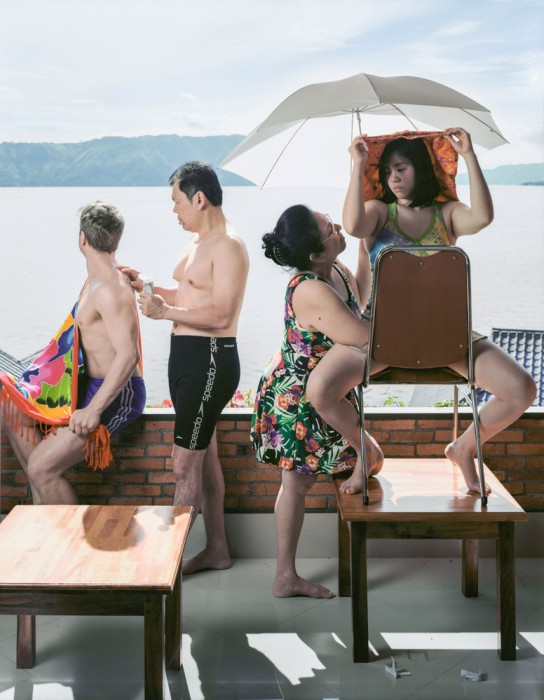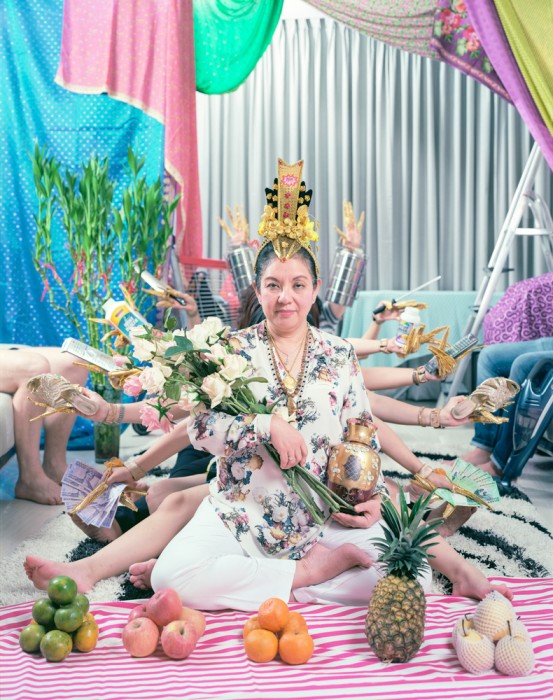Leonard Suryajaya: Different Blood Type
Meeting Leonard Suryajaya and spending time with his work was one of the highlights of the Medium Festival of Photography this past October. Leonard’s photographs stood apart for their operatic qualities of theater, pageantry, color, pathos, emotion, humor, costume, and originality. His positive energy was infectious and his unique approach to a host of cultural, sexual, and familial complexities was refreshing and inspiring. Leonard will be lecturing at the national SPE Conference in March and currently has a residency with the Chicago Artists Coalition. Leonard’s work is featured in Preview 5, a group exhibition organized by curator and art historian Grace Deveney that features the 2015-2016 BOLT Residents, running through December 10, 2015. He will also have a solo exhibition in March with this same organization.
Leonard received dual bachelor’s degrees in Theatre Art and Creative Photography from California State University Fullerton in 2013. He received his Master of Fine Arts in Photography at SAIC in May 2015. He has exhibited his work extensively, including at Expo Chicago, Mana Contemporary, Defibrillator Gallery, and the Irvine Fine Arts Center in Irvine, CA. Leonard currently lives in Chicago and works in Indonesia and the United States.
Different Blood Type
Influenced by the cultural milieu of experiencing inter ethnic relations in Indonesia, my work explores intricate and complicated layers of selfhood in the context of cultural background, intimacy, sexual preference, and personal displacement. By utilizing photography, video, along with elements of performance and installation, through the use of personal narrative and story telling, my work challenges and deconstructs the perspective we use to scrutinize and observe our roles in a transnational global world.
Oppression and suppression were the themes of my childhood. Events, such as my grandfather fleeing the communist regime, eradication of Chinese culture by the Indonesian government, and escaping genocides framed my upbringing. As a second generation “Indonesian Citizen of an Alien Descent”, I was raised to witness constant cultural and religious clashes.
Although my parents are Buddhists, they put me in Christian schools to ensure a good education. But it was largely a Muslim woman, my “other” mother, who raised me. Early on, this constant “placelessness” within paradigms of self-identification urged me to someday reconcile these discrepancies.
The discovery of my sexuality also deeply alienated me from my home and family. My traditional family and conservative country didn’t permit fluid gender expression and homosexuality, so I suppressed my individuality and conformed.
I learned that my body, as the projection surface of my selfhood, is a battleground. Although it is a medium of my autonomy, it is also a medium of my oppression. I realized how my physical appearance and my cultural markings resulted in hostility against me. I realize that I was already queer before I was a homosexual.
Despite finding a new sense of freedom and agency in America, I understand that fleeing my family and country is not the solution to the ambivalence I feel about my upbringing. I am unable to fully desire this past, also unable to properly mourn its loss. Constantly placeless, confused about the validity of my familial relationships, and skeptical about the validity of my identity in the setting I am in, I never understood what sense of belonging is like.
Through an absence of physical and verbal affection in my upbringing, I use the visual medium to produce a new language of intimacy and longing. The desire for closeness, accompanied by apprehension, guides me in my exploration. I found myself using photography as an excuse to construct a new and more privately familiar world.
My work in Indonesia allows me to speak about social unrest, locally and globally. It gives me the opportunity to work with my family and host conversations with students and local youth about self-identity, discrimination, misleading notions of social superiority, and collective trauma. These conversations manifest themselves in photographic documents that reveal underlying power dynamics and the complexities of a diverse society. The photographs are the stage to act out their fears, hopes, joys, frustrations, and skepticism. Photography becomes an exercise in recognizing autonomy through participation. It is important that I don’t make photograph that socially profile my subjects and further strip the sense of autonomy they have.
From this experience, I’ve realized more fully that individual and social hardships do not exist in isolation. Regardless of their location in the world, oppression, ethnic cleansing, cultural distrust, and displacement are always present—as is the need to form a distinct identity in the context of changing cultures. It is a script that gets remounted year after year with new actors and different staging. Sharing my experience and the experience of those close to me not only give us a voice, but speaks to others around the world in similar situations.
Using my own confusing background as a primary source of questioning and aesthetic inspiration, I create visual experiences that provoke similarly personal responses from the viewer, while remaining rooted in the specificity of my experience and that of my subjects. Chaos, humor, submission, defiance, and play combine to prompt reflection on the viewer’s understanding of identity—and others’. My subjectivity is integrated into the image, which similarly calls forth and questions the subjectivity, personal experience, and perspectives of the viewer.
I use personal narratives and relationships to challenge the ubiquity of the lens based medium and exoticism in looking in creating visual experiences for the viewer to respond to. The possibilities and limitations of the lens-based mediums provide the perfect expression of an ambivalent identity. Photographs and videos provoke the viewer’s awareness of their own questions, and answer by revealing both more and less than what it is seen. It is my ambition to use my own confusing background in work that expands the viewer’s understanding of identity—both their own, and other’s. And in the process, I hope to challenge conflicting conceptions of personal and cultural identities, intimacy, physical boundaries, gender roles, sexuality, queerness and freedom.
Posts on Lenscratch may not be reproduced without the permission of the Lenscratch staff and the photographer.
Recommended
-
Salua Ares: Absense as FormNovember 29th, 2025
-
Ricardo Miguel Hernández: When the memory turns to dust and Beyond PainNovember 28th, 2025
-
Pamela Landau Connolly: Columbus DriveNovember 26th, 2025
-
KELIY ANDERSON-STALEY: Wilderness No longer at the Edge of ThingsNovember 19th, 2025
-
Jackie Mulder: Thought TrailsNovember 18th, 2025

